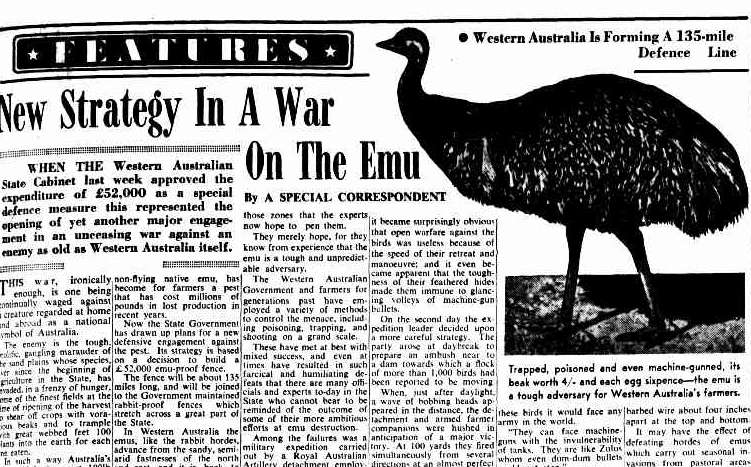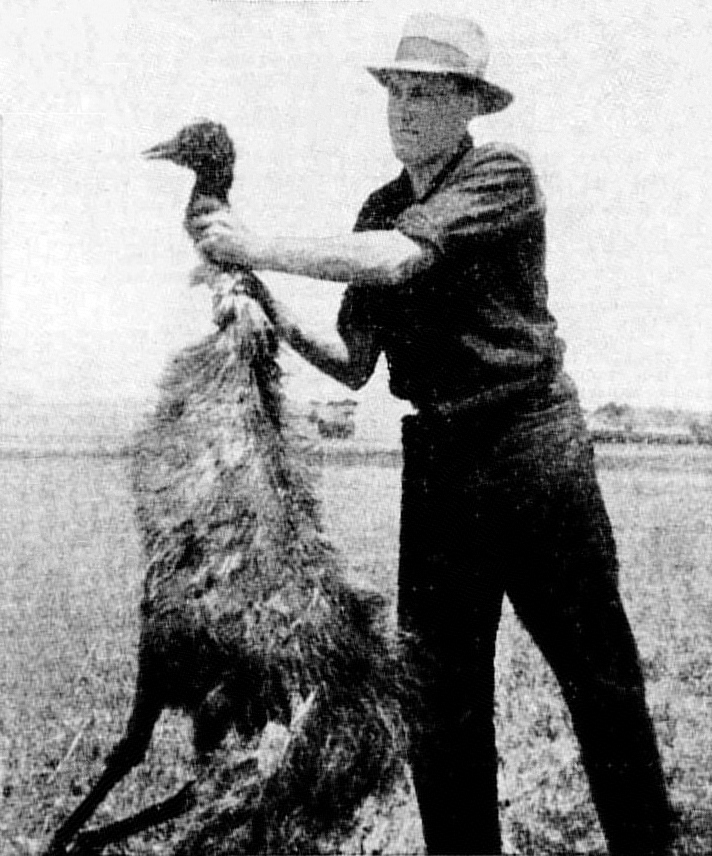In the aftermath of World War I, Australia faced an unexpected enemy that would challenge its military might. This peculiar confrontation wasn’t against a foreign army but against thousands of determined emus that had invaded the Western Australian wheat belt region.
The early 1930s brought significant hardship to Australian farmers who were struggling to maintain their wheat farms. As if the Great Depression wasn’t enough, nature threw another challenge their way when approximately 20,000 emus began their seasonal migration. These giant flightless birds discovered the irrigated crops and decided to make themselves at home.

A group of emus during the Great Emu War. Credit: Footnoting History
The situation became so dire that desperate farmers turned to an unusual solution. They called upon the military to handle what they termed the ‘Emu menace.’ The government responded by deploying military personnel armed with Lewis guns and 10,000 rounds of ammunition. What could possibly go wrong when facing a bunch of birds?
The military’s initial strategy seemed straightforward enough. They planned to ambush the emus using machine guns mounted on trucks. However, the hardy birds proved to be surprisingly resilient and tactical. The emus split into small groups, making it difficult for the soldiers to target them effectively. Even when hit, the birds often continued running, thanks to their thick feathers.

Australian soldiers attempting to combat the emu invasion. Credit: IFLScience
Major G P W Meredith, who led the operation, quickly discovered that these birds were far more challenging opponents than anticipated. The emus demonstrated remarkable survival instincts, scattering into the brush whenever the soldiers opened fire. The trucks couldn’t keep up with the birds in rough terrain, and the guns frequently jammed at crucial moments.
After several failed attempts to curb the emu population, the military withdrew in defeat. The birds had won through superior mobility and unexpected resilience. Local farmers continued to face crop destruction, leading them to implement more practical long-term solutions like improved fencing and local control measures.
The Great Emu War remains a fascinating chapter in Australian history. It serves as a humbling reminder that nature often prevails against human technology. The event has become part of Australian folklore, demonstrating how even the most well-equipped military can be outmaneuvered by determined wildlife.
Today, the Emu War stands as a testament to the complex relationship between agriculture and wildlife. While farmers eventually developed more effective methods to protect their crops, the emus continue to thrive in Western Australia. This unusual conflict highlights the importance of finding sustainable solutions when human settlement intersects with wildlife habitats.
References:
Emu War – Wikipedia – link
The Emu War – Footnoting History – link
The Great Emu War Of 1932 – IFLScience – link
Categories: Australian History, Do you know, Historical Events, Military History, Wildlife
Tags: Agriculture, Australian History, Emu War, Military History, Natural History, Unusual Wars, Western Australia, Wildlife
Religion: None
Country of Origin: Australia
Topic: Historical Events
Ethnicity: None


